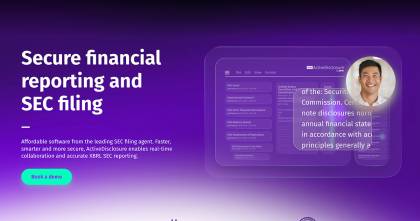Publicly traded companies are required by law to file certain forms with the Securities and Exchange Commission (SEC) as required by the Securities Exchange Act. Among them is Form S-8.
What is Form S-8?
Form S-8 is used to register securities that a publicly traded company offers as part of its employee benefits package. For example, if employees receive shares as part of their benefits package, the company will need to file an S-8 form registering these shares before it can give them to employees. Other examples of when filing an S-8 form might be necessary include a tech startup issuing stock options to new hires or an established manufacturer awarding profit-sharing shares to retirees.
The SEC wants businesses to go through this extra step for transparency. The reporting process is designed to provide investors with information about the securities including how the plan or shares are structured. Essentially, this step is in place to let the employees know more about the securities they've received as benefits. While there is some extra reporting associated with a Form S-8 filing, it's not intended to be a regulatory burden.
Stocks are one example of the type of security reported on this registration statement. Companies must also issue S-8 forms for:
- Employee bonuses
- Stock options
- Profit-sharing initiatives
Likewise, while the law is written using the word 'employee,' the SEC defines this word broadly. Individuals you may not typically count as employees - such as consultants, advisors, or trustees - are also included for the purposes of the
S-8.
Form S-8 Timeline
The SEC requires that companies have an S-8 on file before issuing securities. Thus, a business that plans to give holiday bonuses to employees needs to plan and file the S-8 accordingly. In general, companies typically file an S-8 soon after the board approves any new equity compensation plans and before employees receive their shares. This is important because issuing shares without a Form S-8 on file could result in penalties.
Form S-8 Considerations
While businesses are to use the S-8 when gifting shares to consultants and advisers, the SEC does have a couple of considerations to note. The SEC does not want an S-8 used for individuals who market company shares. Let's look at an example to illustrate the distinction.
Consultant A helps a business with operations and does not promote the business to investors. When Consultant A is issued shares, the company can file an S-8.
Consultant B helps the business with operations; however, she promotes the business to investors and drives up the share price accordingly. For Consultant B's shares, the company does not need to file an S-8.
In the past, companies misused Form S-8 to report shares gifted to parties such as Consultant B. When those parties sold their shares for a profit, the company received the proceeds. The SEC frowned upon this as double-dipping.
Common Pitfalls With S-8 Filings
Even if a company is committed to filing a Form S-8, there’s still a chance it could run into trouble if it isn’t careful. For example, incomplete disclosures are often not the result of willful malfeasance, but simple omissions due to poor record-keeping practices. This is why companies need to be aware of their records and make sure their compensation plans are thoroughly and comprehensively documented as they go through the process of filing their Form S-8.
Another common pitfall many companies encounter when going through the S-8 filing process is not waiting for the filing to be completed before awarding shares. This invites intense scrutiny from the SEC and could result in a host of problems for the company. It is strongly advised that companies wait until the initial registration has been fully completed before going through the process of distributing securities.
SEC S-8 Filing Solutions
Form S-8 is one of many SEC filing forms that companies need to file consistently. Managing deadlines and reporting requirements for SEC S-8 filing and associated filings can be tricky, given that different events and timelines may trigger the need to file.
For this reason, companies should look for efficient SEC reporting software that accommodates the latest SEC requirements regarding electronic filing and markup languages. This ensures HR, legal and finance teams can collaborate seamlessly through a single platform to ensure that nothing is overlooked or left to chance. With the right SEC reporting software, companies also can set up automated reminders for share-based compensation plans to prevent mistakes such as issuing securities too soon.
DFIN offers an all-in-one SEC filing solution that accommodates electronic filing, offers enhanced security standards, and is cloud-based for anytime, anywhere use. Discover how DFIN can help your business meet SEC S-8 filing requirements with ease, efficiency, and accuracy.
